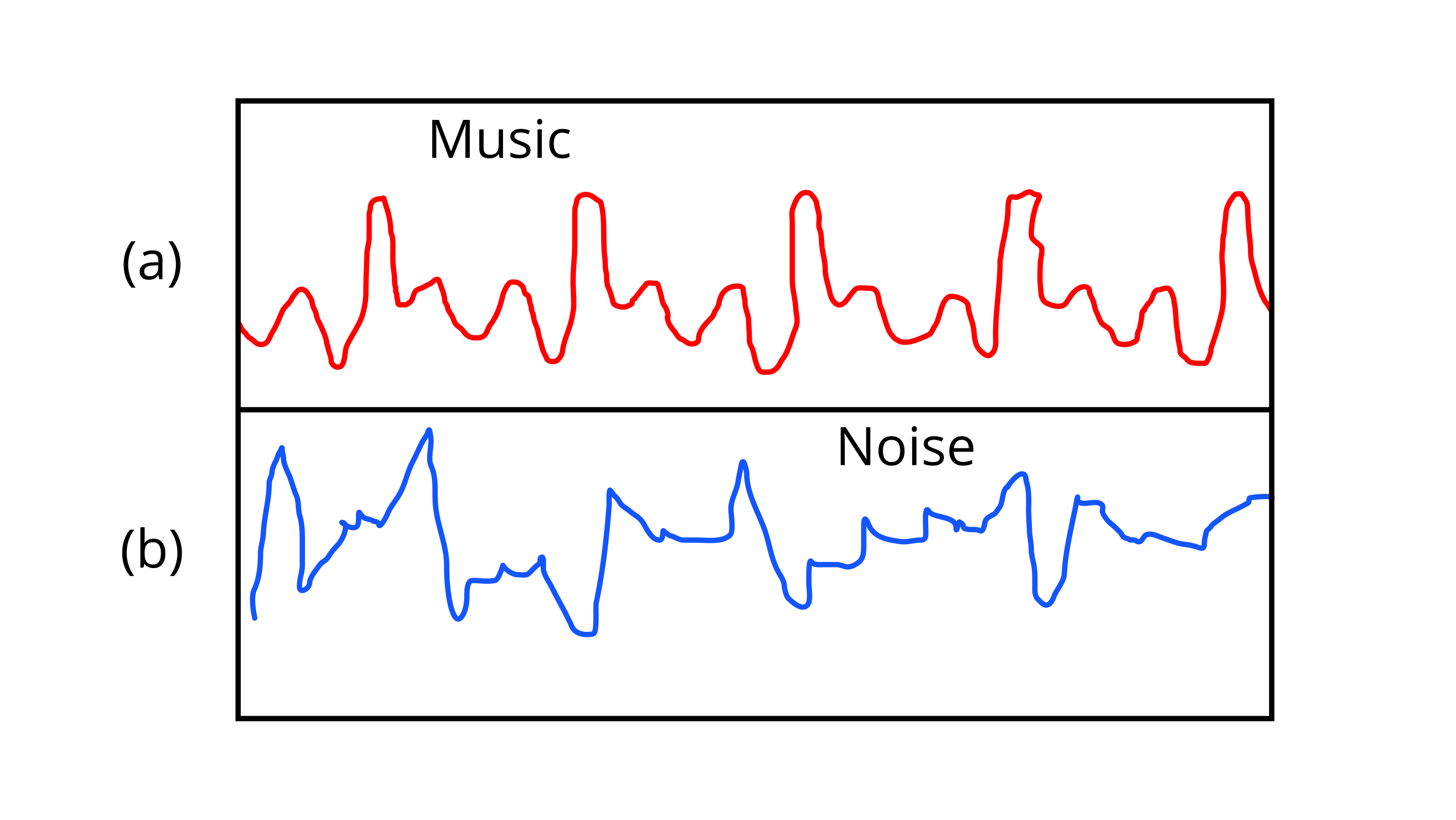Sound Solutions for Class 10 Physics ICSE Board (Concise - Selina Publishers)
Free download of step-by-step solutions for class 10 Physics chapter 7 - Sound of ICSE Board (Concise - Selina Publishers). All exercise questions are solved & explained by an expert teacher and as per ICSE board guidelines.
Access ICSE Selina Solutions for Class X Science(Physics) Chapter 7 – Sound
1. What are mechanical waves?
Ans: The mechanical wave can be defined as a wave that is not capable of transmitting its energy through the vacuum. To transport the energy from one location to another the mechanical waves require a medium. An example of a mechanical wave is a sound wave.
2. Define the following terms in relation to a wave.
(a) Amplitude
Ans: When the maximum displacement is moved by a point on a body that is vibrating it is called the amplitude. It is almost equal to one-half the length of the path vibration.
(b) Frequency
Ans: The frequency is the number of waves that pass with a fixed point at a specific time. It can also be defined as the number of vibrations during one unit of time.
(c) Wavelength
Ans: It is the distance between the two successive troughs or crests of a wave. It can be measured in the wave direction. The wavelength and frequency are inversely proportional to each other.
(d) Wave velocity
Ans: The distance travelled by a periodic motion per unit time in any direction is called wave velocity. The wave velocity is also known as the speed.
3. A wave passes from one medium to another medium. Mention one property of the wave out of speed, frequency or wavelength,
i. Which changes
Ans: The wavelength or the speed of the wave changes when a wave passes from one medium to another medium.
ii. Which does not change
Ans: There will be not any change in the frequency of the wave when a wave travelling in one medium passes to another medium.
4. State two factors on which the speed of a wave travelling in a medium depends.
Ans: The factors on which the speed of sound depends are the density of the medium through which it is travelling and the elasticity. In liquid, the sound travels faster as compared to the gases and in solids, it travels as compared to the liquids.
5. State two differences between the light and sound waves.
Ans:
Light waves | Sound waves | ||
1 | Light waves are electromagnetic waves | 1 | The sound waves are the mechanical waves. |
2 | They can travel in a vacuum. | 2 | They require a material medium for propagation. They cannot travel in a vacuum. |
6. What do you mean by the reflection of sound? State one condition for the reflection of a sound wave. Name a device in which reflection of sound waves is used.
Ans: When the sound strikes the surface of the other medium and bounces back in some different direction when it travels in a given medium this is called the reflection of sound. The condition is that the reflecting surface size should be much bigger than that of the wavelength of the sound wave. The device in which the reflection of sound waves is used is the megaphone.
7. What is meant by an echo? State two conditions necessary for an echo to be heard distinctly.
Ans: The echo is a sound that is caused by the reflection of the sound waves from a surface back to the listener.
The two conditions for an echo to be heard distinctly are given as follows.
There should be a minimum 17m distance between the source of sound and the reflector in air.
The size of the reflector should be large enough as compared to the wavelength of the sound wave.
8. A man is standing at a distance of 12m from a cliff. Will he be able to hear a clear echo of his sound? Give a reason for your answer.
Ans: The time taken to hear the echo will be calculated as follows:
$t=2 d / v$
$=\dfrac{(2 \times 12)}{340}$
$=\dfrac{24}{340}$
=0.07 < 0.1 seconds
The man will not be able to hear the echo as the sensation of a sound persists in our ears for about 0.1 seconds after the exciting stimulus ceases to act upon it.
9. State two applications of echo.
Ans: The applications of echo are as follows:
In the medical field, doctors use this technique in the cardiograph, sonogram and many other medical diagnoses.
The dolphins use the technique of echolocation to locate their ways as they cannot see from their eyes. Through the reflected sound they can understand if there is an object in between. Therefore by using this technique it hunts its prey.
10. Explain how the speed of sound can be determined by the method of echo?
Ans: To hear an echo the sound has to travel from the source of the sound to the reflector and back from the reflector to the source of the sound.
If d is the distance between the source and the reflection and t is the time taken, then the total distance travelled is 2d.
Therefore the speed of sound can be calculated by using the relation given as follows:
Speed [V] = $\dfrac{\text{Total distance travelled} [2d]}{\text{Time taken} [t]}$
11. State the use of echo by a bat, dolphin and fisherman.
Ans: The bats, dolphins and fishermen use the principle of echo for locating the obstacles and prey. They produce ultrasonic waves and send them in all directions. When these waves are reflected back from the obstacles they are able to hear the echo.
12. How do bats avoid obstacles in their way, when in flight?
Ans: The bat has the ability to generate and detect sound waves of very high frequency. If any obstacle is encountered in the path of the bat then the sound waves generated by the flying bats get reflected from any obstacle residing in front of it. Also, the hearing ability of the bats is even stronger than any other animal in that they come to know the positions of obstacles just by hearing the echoes. They are able to produce and detect the sound of very high frequency up to about 100 kHz. Therefore, without colliding with the obstacles, bats can fly safely.
13. What is meant by sound ranging? Give one use of sound ranging.
Ans: The process of detecting obstacles with the help of an echo is called sound ranging. Animals such as bats, dolphins use sound-ranging to detect their enemies.
14. Name the waves used for sound ranging. State one reason for their use. Why are the waves mentioned by you not audible to us?
Ans: The waves used for sound ranging is ultrasonic sound waves. These ultrasonic waves have a frequency of more than 20,000 Hz. The range of audibility of the human ear is 20 Hz to 20,000 Hz therefore these are not audible.
15. What is ‘SONAR’? State the principle on which it is based.
Ans: The SONAR is the abbreviation of Sound Navigation and Ranging, it is a system for detecting the objects underwater by emitting the sound pulses and measuring their return after being reflected. The SONAR is based on the principle of echo. Sonar is helpful for exploring and mapping the ocean because sound waves travel farther in the water than that of radar and light waves do.
16. State the use of echo in the medical field.
Ans: In the medical field, the echo method of ultrasonic waves is used for imaging human organs such as the liver, gallbladder, uterus, womb, etc. This is called ultrasonography. In addition to this to obtain the image of the human heart, echocardiography is used.
17. The minimum distance between the source and the reflector in air, so that an echo is heard is approximate.
(a) 10 m
(b) 17 m
(c) 34 m
(d) 50 m
Ans: The minimum distance between the source and the reflector in air, so that an echo is heard is approximately 17m. Hence the correct answer is option b.
18. To detect the obstacles in their path, bats produce.
(a) Infrasonic waves
(b) Ultrasonic waves
(c) Electromagnetic waves
(d) Radio waves
Ans: To detect the obstacles in their path, bats produce ultrasonic waves. Hence the correct answer is option b.
19. The wavelength of waves produced on the surface of water is 20cm. If the wave velocity is 24ms-1, calculate,
(i) The number of waves produced in one second
Ans: The number of waves produced in one second or frequency
$=\dfrac{(velocity)}{Wavelength}$
$=\dfrac{(24)}{20 \times 10^{-2}}$
$=\frac {1}{20}$
(ii) The time in which one wave is produced.
Ans: Time in which one wave is produced
$=\dfrac{1}{\text { frequency }}$
$=1 / 120$
$=8.3 \times 10^{-3} \text { seconds }$
20. Calculate the minimum distance in the air required between the source of sound and the obstacle to hearing an echo. Take the speed of sound in air = 350ms-1
Ans: We know that
Velocity $=\dfrac{2 D}{time}$
$=\dfrac{350 \times 0.1}{0.2}$
$=17.5 \mathrm{~m}$
The minimum distance in air required between the source of sound and the obstacle to hear an echo is 17.5m.
21. What should be the minimum distance between the source and reflector in water so that echo is heard distinctly? (The speed of sound in water = 1400m/s)
Ans: $Velocity=\dfrac{2 D}{time}$
$1400=\dfrac{2 \times D}{0.1}$
$D=\dfrac{1400 \times 0.1}{2}$
$D=70 \mathrm{~m}$
The minimum distance between the source and reflector in water so that echo is heard distinctly is 70m.
22. A man standing 25 m away from a wall produces a sound and receives the reflected sound.
a. Calculate the time after which he receives the reflected sound if the speed of sound in air is 350 m/s-1.
Ans: $Velocity=\dfrac{2 D}{time}$
$Time=\dfrac{2 \times 25}{350}$
$Time=0.143 \mathrm{~s}$
Therefore the time after which he receives the reflected sound is 0.143 sec.
b. Will the man be able to hear a distinct echo? Explain the answer.
Ans: The man will be able to hear a distinct echo as the reflected sound reaches the man 0.1 seconds after the original sound is heard and this original sound persists only for 0.1 seconds.
23. A RADAR sends a signal to an airplane at a distance of 300 km away, with a speed of 3 × 108 ms-1. After how much time is the signal received back after reflecting from the airplane?
Ans: Given.
Speed of sound transmitted from RADAR = 3 × 108 ms-1
Distance at which the signal is transmitted = 300 km = 300000 m
The signal travels twice which means when transmitted and when it is being received by the RADAR, the distance is calculated twice.
Total distance the signal travels = 2 × 300000 m
Time taken to receive the signal back after reflecting from the aeroplane is
$t=\dfrac{d}{s}$
$t=\dfrac{2 \times 3 \times 105}{3 \times 108}$
t = 0.002 seconds
The signal received back after reflecting from the aeroplane after 0.002 seconds.
24. A man standing 48 m away from a wall fires a gun. Calculate the time after which an echo is heard. (The speed of sound in air is 320m/s-1).
Ans: $Velocity=\dfrac{2D}{time}$
Time after which an echo is heard = 2D / velocity
$t=\dfrac{2 \times 48}{320}$
= 0.3 seconds
The time after which an echo is heard is 0.3 sec.
25. A ship on the surface of water sends a signal and receives it back from the submarine inside water after 4s. Calculate the distance of the submarine from the ship. (The speed of sound in water is 1450 m s-1).
Ans: 2D = velocity × time
D = (Velocity × time)/2
$D=\dfrac{1450 \times 4}{2}$
D = 2900 m
D = 2.9 km
The distance of the submarine from the ship is 2.9 km.
26. A pendulum has a frequency of 5 vibrations per second. An observer starts the pendulum and fires a gun simultaneously. He hears an echo from the cliff after 8 vibrations of the pendulum. If the velocity of sound in air is 340ms-1, find the distance between the cliff and the observer.
Ans: Given. 5 vibrations by the pendulum per second. Thus for 8 vibrations = 8 / 5 seconds = 1.6 seconds
$Velocity=\dfrac{2D}{time}$
$340=\dfrac{2D}{1.6}$
$D=\dfrac{340 \times 1.6}{2}$
D = 272 m
The distance between the cliff and the observer is 272m.
27. A person standing between two vertical cliffs produces the sound. Two successive echoes are heard at 4s and 6s. Calculate the distance between the cliffs. (Speed of sound in air = 320m/s)
Ans: The distance of first cliff from the person,
2 × D1 = velocity × time
D1 = \[\frac {(320 \times 4)}{2}\]
D1 = 640 m
Distance of the second cliff from the person,
D2 = \[\frac {(320 \times 6)}{2}\]
D2 = 960 m
Distance between cliffs = D1 + D2
= 640 + 960
= 1600 m
The distance between the cliffs is 1600m.
28. A person standing at a distance x in front of a cliff fires a gun. Another person B standing behind person A at a distance y from the cliff hears two sounds of the fired shots after 2s and 3s respectively. Calculate x and y (take speed of sound 320 ms-1)
Ans: Person B hears two of the fired shots, the first one is direct from the gun while another sound comes after reflection from the cliff
Given the speed of sound 320 m / s
Time taken by the sound to reach from A to B directly
Speed = \[\frac{\text{Distance}}{\text{Time}}\]
320 = \[\frac {(y - x)}{2}\]
(y – x) = 320 × 2
(y – x) = 640 (1)
After reflection from the cliff
320 = \[\frac {(y + x)}{3}\]
(y + 3) = 320 × 3
(y + 3) = 960 (2)
By adding equation (1) and (2)
2y = 1600
y = \[\frac {1600}{2}\]
y = 800 m
x = 160 m
29. On sending an ultrasonic wave from a ship towards the bottom of a sea, the time interval between sending the wave and receiving it back is found to be 1.5 s. If the velocity of waves in sea water is 1400 m/s, find the depth of sea.
Ans: Depth of the sea = \[\frac {(velocity \times time)}{2}\]
= \[\frac {(1400 \times 1.5)}{2}\]
= 1050 m
The depth of the sea is 1050m.
30. Figure below shows the distance-displacement graph of two waves A and B. Compare the amplitude and the wavelength of the two waves.

Ans: The amplitude is the maximum displacement from the mean position.
For A the maximum displacement = 10 cm and
For B the maximum displacement = 5 cm
The ratio of maximum amplitude is \[\frac {A_1}{A_2}\] = \[\frac {10}{5}\] = \[\frac {2}{1}\] = 2. 1
Wavelength of A = 8 cm
Wavelength of B = 16 cm
The ratio of wavelength is $=\frac {\lambda_1}{\lambda_2}$ = \[\frac {8}{16}\]
= \[\frac {1}{2}\]
= 1. 2
31. What is meant by the natural frequency of vibrations of a body? Name one factor on which it depends?
Ans: The natural frequency of the vibration of the body occurs when each body capable of vibrating is set to vibrate freely, with a frequency f. The natural frequency vibration of a body depends on the shape as well as on the size of the body.
32. What do you understand about the natural vibrations of a body? Give one example.
Ans: The natural or the free vibrations are the vibrations of a body in the absence of any external force on it. For example, The various strings are set in vibration each at its own natural frequency when we strike the keys of a piano.
33. (a) Draw a graph between displacement and time for a body executing the natural vibrations
Ans: The displacement time graph for the free vibrations is shown below for a body executing free vibrations.

(b) Where can a body execute the natural vibrations?
Ans: The body executes natural vibrations when the oscillations of a body are set into the vibrations by any external force and then left to it.
34. State one way of increasing the frequency of a note produced by an air column.
Ans: Due to decreasing in the length of the air column the frequency of the note produced in the air column can be increased.
35. (a) Name one factor on which the frequency of sound emitted due to vibration in an air column depends.
Ans: When the frequency of sound is emitted due to the vibration in an air column, it affects the length of the air column.
(b) How does the frequency depend on the factor stated in part (a).
Ans: We can say that they are inversely proportional to each other i.e f ∝ 1 / l, as the frequency decreases as the length of the air column increases.
36. State one condition for a body to execute the natural vibrations.
Ans: The presence of medium around the body offers some resistance due to which the amplitude of vibration continuously decreases and does not remain constant. Therefore due to this reason, the natural vibrations of a body occur only in a vacuum.
37. State two ways of increasing the frequency of vibrations of a stretched string.
Ans: The two ways of increasing the frequency of vibrations of a stretched string are as follows.
(i) By increasing the tension in the string
(ii) By decreasing the length of the string
38. How does the frequency of sound given by a stretched string depend on its,
(a) Length
Ans: Length. The frequency of sound is inversely proportional to the length of the string. f ∝ 1 / l
(b) Tension
Ans: Tension. The frequency of sound is directly proportional to the square root of the tension in the string. f ∝ √T
39. What adjustments would you make for tuning a stringed instrument for it to emit a note of a desired frequency?
Ans: We can get the desired frequency by varying the tension. Therefore a stringent instrument is provided with the provision for adjusting the tension of the string.
40. The diagram below in Fig. shows three ways in which the string of an instrument can vibrate.

(a) Which of the diagrams shows the principal note?
Ans: Diagram showing the principal note is (i).
(b)Which vibration has the frequency four times that of the first?
Ans: Diagram which has the frequency four times that of the first is (iii).
(c) Which vibration is of longest wavelength?
Ans: Diagram having the longest wavelength is (i).
(d) What is the ratio of the frequency of vibrations in diagram (i) and (ii)?
Ans: The ratio of the frequency of vibrations in diagram (i) and (ii) is 1. 2.
41. Explain why strings of different thicknesses are provided on a stringed instrument.
Ans: The strings of different thickness are provided on a stringed instrument in order to produce different frequency sound waves. This is due to the natural frequency of vibration of a stretched string being inversely proportional to the radius of the string.
42. A blade, fixed at one end, is made to vibrate by pressing its other end and then releasing it. State one way in which the frequency of vibrations of the blade can be lowered.
Ans: The frequency of vibrations of the blade can be lowered by increasing the length of the blade or by sticking a small weight on the blade at its free end.
43. How does the medium affect the amplitude of the natural vibrations of a body?
Ans: The surrounding medium offers resistance to the motion because of this the energy of the vibrating body continuously decreases due to which the amplitude of vibration decreases gradually.
44. What are the damped vibrations? How do they differ from free vibrations? Give one example of each.
Ans: The damped vibrations are the periodic vibrations of a body of decreasing amplitude in presence of a resistive force. When a body is made to vibrate in a medium the amplitude of the vibrating body continuously decreases with time and ultimately the body stops vibrating. For example, The slim branch of a tree makes damped vibrations when it is pulled and then released. The vibrations of a spring having a mass at its end, in the air are the damped vibrations.
45. The diagram in the figure shows the displacement-time graph of a vibrating body.

(i) Name the kind of vibrations.
Ans: Damped vibrations
(ii) Give one example of such vibration.
Ans: A tuning fork when stroked on a rubber pad undergoes the damped vibrations in air.
(iii) Why is the amplitude of vibrations gradually decreasing?
Ans: The amplitude of vibrations decreases because of the frictional force. The energy of the vibrating body continuously dissipates in doing work against the force of friction. Therefore its amplitude gradually decreases.
(iv) What happens to the vibrations of the body after some time?
Ans: When it has lost all its energy it stops vibrating.
46. A tuning fork is set into vibrations in the air. Name the kind of vibrations it executes.
Ans: A tuning fork executes damped vibrations in the air.
47. Draw a sketch showing the displacement of a body executing damped vibrations, against time.
Ans: The displacement time graph of damped vibrations is shown below.

48. What are the forced vibrations? Give one example to illustrate your answer.
Ans: The forced vibrations are the vibrations of a body that take place under the influence of external periodic force acting on it. Example. When an artist plays the guitar he forces the strings of the guitar to execute the forced vibrations.
49. On keeping the stem of a vibrating tuning fork on the surface of a table, a loud sound is heard. Give a reason.
Ans: The tuning fork produces forced vibrations in the tabletop when the stem of a vibrating tuning fork is pressed against the top of a table. We can hear a loud sound known as the resonance when the frequency of the periodic force applied on a body is equal to the natural frequency of that body. Therefore due to this resonance, a loud sound is heard on keeping the stem of a vibrating tuning fork on the surface of a table.
50. State two differences between the natural and forced vibrations
Ans: Difference between forced vibrations and natural vibrations are as follows:
Forced vibrations | Natural vibrations | ||
1 | The forced vibrations can be produced by an external periodic force of any frequency. | 1 | This vibration occurs when a body is displaced from its equilibrium position and released |
2 | In this vibration the amplitude is small but remains constant as the force is acting. | 2 | Amplitude in these vibrations decreases with time. |
51. What is meant by resonance? Describe a simple experiment to illustrate the phenomenon of resonance and explain it.
Ans: The resonance is the phenomenon when the frequency of the externally applied periodic force on a body is equal to its natural frequency with increased amplitude the body readily begins to vibrate and is a special case of forced vibrations.
Sample experiment.

Mount two identical tuning forks A and B with both having the same frequency on two separate sound boxes such that their open ends face each other as shown in the above figure. The prong A of one of the tuning forks starts vibrating when it is struck on a rubber pad. On putting this tuning fork A on its soundbox, the tuning fork B also starts vibrating and a loud sound is heard. It is because of the resonance, the vibrations are produced in B.
52. State the condition for the resonance to occur.
Ans: The condition for resonance is, the phenomenon called resonance occurs when the applied force causes forced vibration in the body and the frequency of the applied force is exactly equal to the natural frequency of the vibrating body. The phenomenon called resonance occurs
53. Complete the following sentence.
Resonance is a special case of ______ vibrations when the frequency of the driving force is _______ natural frequency of the driven body.
Ans: Resonance is a special case of forced vibrations when the frequency of the driving force is equal to the natural frequency of the driven body.
54. State two differences between the forced and resonant vibrations
Ans: The differences between the forced and resonant vibrations are:
Resonant vibrations | Forced vibrations | ||
1 | The amplitude of this vibration is very large. | 1 | The amplitude of this vibration is small compared to the other one. |
2 | The vibrations of the body are in phase with the external periodic force. | 2 | The vibrations of the body are not in phase with the external periodic force. |
55. Why is a loud sound heard at resonance?
Ans: The body vibrates with a large amplitude at resonance and sends forth a large amount of energy in the medium. Due to this conveying more energy to the ear is possible and a loud sound is heard.
56. The figure shows two tuning forks A and B of the same frequency mounted on two separate sound boxes with their open ends facing each other. The fork A is set into vibration.

(a) Describe your observation.
Ans: The forced vibrations are produced by the vibrating tuning fork A in the air column of its soundbox. Because of the large surface area of air in the soundbox, the vibrations are of large amplitude. They are communicated to the soundbox of the fork B. The air column of B starts vibrating with the frequency of fork A. Thus due to the frequency of these vibrations being the same as the natural frequency of fork B, fork B picks up these vibrations and starts vibrating under the resonance.
(b) State the principle illustrated by this experiment.
Ans: After putting the tuning fork A to vibrate, the other tuning fork B also starts vibrating. Since the resonance, the vibrations are produced in the second tuning fork B.
57. In figure A, B, C and D are the four pendulums suspended from the same elastic string XY. The lengths of pendulum A and D are equal, while the length of pendulum B is shorter and of the pendulum C is longer. The pendulum A is set into vibrations.

What is your observation about the vibrations of pendulum D? Give reason for your observation in part (a). What type of vibrations take place in pendulums B and C? Give reason for the answer in part (c)
Ans: Set the pendulum A, normal to its length into the vibration by displacing it to one side. It is observed that the pendulum D starts vibrating initially with a small amplitude and ultimately it acquires the same amplitude as the pendulum A had initially. Just because the total energy is constant the amplitude of the pendulum D becomes maximum and hence the amplitude of the pendulum A becomes minimum. After some time the amplitude of the pendulum D will decrease and the amplitude of A increases. Only between the pendulums A and D, the exchange of energy takes place since their natural frequencies are the same. Additionally the pendulums B and C vibrate with very small amplitudes. The vibrations produced in pendulum A are communicated as the forced vibrations to the other pendulums B, C and D through XY. The pendulum D comes in the state of resonance while the pendulums B and C remain in the state of forced vibrations.
58. A vibrating tuning fork, held over an air column of a given length with its one end closed, produces a loud audible sound. Name the phenomenon responsible for it and explain the observation.
Ans: The resonance phenomenon is responsible for producing a loud audible sound when a vibrating tuning fork, held over an air column of a given length with its one end. The forced vibrations in the air column are caused by the vibrating tuning fork. The loud sound is heard for a certain length of the air column. This happens when the frequency of the air column becomes equal to that of the frequency of the tuning fork.
59. In Figures A, B, C and D represent the test tubes each of height 20 cm which are filled with water up to heights of 12 cm, 14 cm, 16 cm and 18 cm respectively. If a vibrating tuning fork is placed over the mouth of test tube D, a loud sound is heard.

(a) Describe the observations with the tubes A, B and C when the vibrating tuning fork is placed over the mouth of these tubes.
Ans: No loud sound is heard with the tubes A and C, but a loud sound is heard with the tube B.
(b) Give the reason for your observation in each tube.
Ans: The frequency of the air column in tube D is equal to the frequency of the tuning fork. The resonance occurs with the air column in tube B whereas no resonance occurs with the air column of tubes A and C. The frequency vibrations of air column in tube B is same as the frequency of vibrations of air column in tube due to the length of air column in tube D is 20 – 18 = 2 cm and that in tube B is 20 – 14 = 6 cm. But the frequency of the vibrations of air column in tubes A and C is not equal to the frequency vibrations of air column in tube B.
(c) State the principle illustrated by the above experiment.
Ans: The resonance occurs when the frequency of vibrations of the air column is equal to the frequency of the vibrating tuning fork.
60. When a troop crosses a suspension bridge, the soldiers are asked to break their steps. Why?
Ans: While the soldiers march in steps, all the separate periodic forces exerted by them are in the same phase and due to this in the bridge forced vibrations of a particular frequency are produced. If the natural frequency of the bridge happens to be equal to the frequency of the steps, because of the resonance the bridge will vibrate with large amplitude and the suspension bridge could crumble. Therefore when a troop crosses a suspension bridge, the soldiers are asked to break steps.
61. Why are stringed instruments like guitars provided with a hollow sound box?
Ans: The soundbox is constructed in such a way that the column of air inside has a natural frequency which is the same as that of the string stretched on it, so that when the strings vibrate then the air column inside the box is set into forced vibrations. The soundbox sets a large volume of air into the vibration due to its large area, the frequency of which is the same as that of the string. Therefore a loud sound is produced due to the resonance.
62. How do you tune your radio set to a particular station? Name the phenomenon involved in doing so and define it.
Ans: To tune a radio receiver, we only adjust the values of the electronic components to produce the vibrations of frequency equal to that of the radio waves which we want to receive. When both the frequencies match the energy of the signal of that particular frequency is received from the incoming waves because of the resonance. The signal received is then amplified in the receiver set. This phenomenon is associated with resonance and is a special case of forced vibrations. When the frequency of an externally applied periodic force on a body is equal to its natural frequency, the body quickly begins to vibrate with the increased amplitude. This phenomenon is known as the resonance.
63. A wire stretched between two fixed supports is plucked exactly in the middle and then released. It executes (neglect the resistance of the medium).
(a) Resonant vibrations
(b) Natural vibrations
(c) Damped vibrations
(d) Forced vibrations
Ans: A wire stretched between the two fixed supports, is plucked exactly in the middle and then released. It executes the natural vibrations. Hence the correct answer is option b.
64. When a body vibrates under a periodic force, the vibrations of the body are.
(a) Natural vibrations
(b) Damped vibrations
(c) Forced vibration
(d) Resonant vibrations
Ans: When a body vibrates under a periodic force, the vibrations of the body are forced vibrations. Hence the correct answer is option c.
65. A tuning fork of frequency 256 Hz will resonate with another tuning fork of frequency.
(a) 128 Hz
(b) 256 Hz
(c) 384 Hz
(d) 512 Hz
Ans: A tuning fork of frequency 256 Hz will resonate with another tuning fork of frequency 256 Hz. Hence the correct answer is option b.
66. Name three characteristics of a musical sound.
Ans: The three characteristics of sound are as follows:
Loudness
Pitch or shrillness
Quality or timber
67. (a) Which of the following quantities determines the loudness of a sound wave?
(i) Wavelength
(ii) Frequency
(iii) Amplitude
Ans: The amplitude of the wave determines the loudness of a sound wave. Larger amplitude means a loud sound while smaller amplitude means a soft sound. Hence amplitude is the answer.
(b) How is loudness related to the quantity mentioned in above part (a)
Ans: The loudness is proportional to the square of the amplitude.
68. If the amplitude of a wave is doubled, what will be the effect on its loudness?
Ans: Since the loudness of sound is directly proportional to the square of the amplitude. Therefore if the amplitude of the wave is doubled then the sound will become four times louder.
69. Two waves of the same pitch have amplitudes in the ratio 1.3. What will be the ratio of their,
(i) Loudness
Ans: Loudness is proportional to the square of the amplitude. Therefore the ratio of loudness = 1. 9
(ii) Frequencies
Ans: If the pitch is unchanged, then the frequency remains the same. Therefore the ratio of frequencies = 1. 1
70. How does the wave pattern of a loud note differ from the soft note? Draw a diagram.
Ans:

71. Name the unit in which the loudness of sound is measured?
Ans: The loudness of the sound is measured in units called decibels.
72. Why is the loudness of the sound heard by a plucked wire increased when it is mounted on a soundboard?
Ans: The loudness of the sound heard by a plucked wire increases when it is mounted on a soundboard. This is because the board provides almost a large area and forces a large volume of air to vibrate and therefore increases the sound energy reaching our ears.
73. Define the term intensity of a sound wave. State the unit in which it is measured.
Ans: The intensity of the sound wave at a point of the medium is defined as the amount of sound energy passing per second normally through an unit area at that point. The unit of the intensity of the sound wave is watt per meter2 (Wm - 2).
74. How is the loudness of sound related to the intensity of the wave producing it?
Ans: The relationship between loudness L and the intensity I is as follows.
L = K log10I (where K is constant of proportionality).
75. Comment on the statement 'loudness of sound is a subjective nature, while intensity is an objective nature'
Ans: The intensity of a sound wave at a point of the medium is the amount of sound energy passing per second normally through the unit area at that point. The loudness of a sound depends on the intensity which means the energy conveyed by the sound wave is near the eardrum of the listener. The loudness also depends on the sensitivity of the ears of the listener. Therefore the loudness of the sound of a given intensity may differ from listener to listener. The two sounds of the same intensity but of different frequencies may differ in the loudness even to the same listener. This is due to the sensitivity of the ears to different frequencies. Hence loudness has a subjective nature while intensity, being a measurable quantity, has an objective nature.
76. State three factors that affect the loudness of sound heard by a listener.
Ans: The loudness of the sound heard by a listener depends on the factors mentioned as follows.
The loudness is proportional to the square of the amplitude
The loudness is inversely proportional to the square of distance
The loudness depends on the surface area of the vibrating body
76. The bells of a temple are big in size. Why?
Ans: According to the study of bells the larger bells provide less resonant frequency. It is essential that the frequency of the sound is less for a sound wave to travel long distances. Also, it is observed that the thicker the body of a bell, the quality of sound will be richer. Therefore the bells of a temple are big in size.
77. Name the unit used to measure the sound level.
Ans: The unit to measure the sound level is called the decibel.
78. What is the safe limit of sound level in dB for our ears?
Ans: The safe limit of the sound level in dB for our ears is up to 120 dB.
79. What is meant by noise pollution? Name one source of sound causing noise pollution.
Ans: The disturbance produced due to undesirable loud and harsh sound of level above 120 dB from the various sources such as the loudspeaker, moving vehicles etc in the environment is the noise pollution.
80. What determines the pitch of sound?
Ans: The pitch of a note depends on its frequency. Two notes with same amplitude sounded on the same instrument, will differ in pitch when their vibrations are of different frequencies.
81. Name the subjective property of sound related to its frequency.
Ans: The pitch is the subjective property of the sound related to its frequency.
82. Name and define the characteristic which enables one to distinguish two sounds of same loudness, but of different frequencies given by the same instrument.
Ans: The characteristic by which two sounds of the same loudness, but of different frequencies given by the same instrument can be distinguished is called the pitch.
83. Draw a diagram to show the wave pattern of a high pitch note and a low pitch note, but of the same loudness.
Ans: The diagram for high pitch notes is as follows.

The diagram for low pitch notes is as follows.

84. How is it possible to detect the filling of a bottle under a water tap by hearing the sound at a distance?
Ans: The length of the air column decreases with rising in the water level in a bottle kept under a water tap. Therefore the frequency of the sound produced increases. Thus one can get the idea of the water level in the bottle by hearing sounds from a distance.
85. The frequencies of notes given by flute, guitar and trumpet are respectively 400 Hz, 200 Hz and 500 Hz. Which one of these has the highest pitch?
Ans: Given that the frequencies of notes by flute, guitar, and trumpet are respectively 400 Hz, 200 Hz, and 500 Hz. From the given frequencies the frequency of the trumpet is highest. Hence the trumpet has the highest pitch.
86. Complete the following sentences.
(a) The pitch of sound increases, if its frequency ___________.
Ans: The pitch of sound increases, if its frequency increases.
(b) If the amplitude of the sound is halved, its intensity becomes __________.
Ans: If the amplitude of the sound is halved, its intensity becomes one-fourth.
87. The diagram below shows three different modes of vibration P, Q and R of the same string of a given length.

(a) Which vibration will produce a louder sound and why?
Ans: The amplitude of R is maximum. Therefore R will produce a louder sound.
(b) Which vibration will produce a sound of maximum shrillness (or pitch) and why?
Ans: The frequency of P is maximum. Therefore P will produce a maximum shrillness.
(c) What is the ratio of the wavelength of vibrations P and R?
Ans: The ratio of the wavelength of vibrations P and R is [λp: λR = 1 : 3].
88. Name the characteristic which enables one to distinguish the sound of two musical instruments even if they are of the same pitch and same loudness.
Ans: The quality or timber of sound is the characteristic that enables one to distinguish the sound of two musical instruments even if they are of the same pitch and same loudness.
89. How do the two sounds of same loudness and same pitch produced by different instruments differ? Draw diagrams to illustrate your answer.
Ans: The two sounds having the same loudness and same pitch produced by the different instruments differ due to their different waveforms. The waveforms depend on the number of the subsidiary notes and their relative amplitude along with the principal note. The below diagram shows the wave patterns of the two sounds having same loudness and same frequency but have different waveforms. One is a sine wave and the other is a triangular wave.

90. Two identical guitars are played by two persons to give notes of the same loudness and pitch. Will they differ in quality? Give a reason for your answer.
Ans: Since the guitars are identical, they will have a similar waveform and thus will have a similar quality.
91. Two musical notes of the same pitch and same loudness are played on two different instruments. Their wave patterns are as shown in the diagram below. Explain why the wave patterns are different.

Ans: The different instruments produce different subsidiary notes. A note played on one instrument has a large number of subsidiary notes, while the same note played on another instrument contains only a few subsidiary notes. Therefore they have different waveforms.
92. Which characteristic of sound makes it possible to recognize a person by his voice without seeing him?
Ans: The quality or timbre of a sound is the characteristic that enables us to recognize a person by his voice even if we can’t see him.
93. State the factor that determines
(i) The pitch of a note
Ans: The frequency determines the pitch of a note.
(ii) The loudness of the sound heard
Ans: The amplitude determines the loudness of the sound heard.
(iii) The quality of the note.
Ans: The waveform determines the quality of the note.
94. Name the characteristic of the sound affected due to a large in its
(i) Amplitude
Ans: The characteristic of the sound affected because of the large amplitude present in it is loudness.
(ii) Waveform
Ans: The characteristic of the sound is affected because of the large waveform present in it is quality.
(iii) Frequency
Ans: The characteristic of the sound is affected because of the large frequency present in it is pitch.
95. The sketches I to IV in the figure show sound waves, all formed in the same time interval.

Which diagram shows;
(i) A note from a musical instrument
Ans: Figure IV is a note from a musical instrument.
(ii) A soft (or feeble) note
Ans: A figure I is a soft (or feeble) note.
(iii) A bass (or low frequency) note.
Ans: A figure II is a bass (or low frequency) note.
96. Shows the wave patterns of three sounds A, B and C.

Name the characteristic of sound which is same between,
(i) A and B
Ans: Both A and B have the same amplitude and waveform. Therefore loudness and quality are the same.
(ii) B and C
Ans: In figures B and C, neither amplitude nor waveform is same. Hence no characteristic is the same.
(iii) C and A
Ans: In figures C and A, frequency of both the sound is same and therefore the pitch is same.
97. A microphone is connected to the Y-input of a C.R.O. Three different sounds are made in turn in front of the microphone. Their traces (a), (b) and (c) produced on the screen are shown in figure.

(i) Which trace is due to the loudest sound? Give reason for your answer.
Ans: Figure (b) is due to the loudest sound because amplitude is largest
(ii) Which trace is due to the sound with the lowest pitch? Explain your answer.
Ans: Figure (a) is due to the sound with the lowest pitch because frequency is lowest
98. In what respect does the wave pattern of a noise and music differ? Draw a diagram to explain your answer.
Ans:

The above figure shows the waveforms of music and noise. The wave pattern is regular in music while the wave pattern of noise is irregular.
99. State one difference between a musical note and a noise.
Ans: The difference between a musical note and a noise are:
Noise | Musical note | ||
1 | This is harsh, discordant and unpleasant to the ear. | 1 | This is regular, smooth and pleasant to the ear. |
2 | The sound level is high, that is above 120 dB. | 2 | The sound level is low, between 10 dB to 30 dB. |
100. By reducing the amplitude of the sound wave, its.
(a) Pitch increases
(b) Loudness decreases
(c) Loudness increases
(d) Pitch decreases
Ans: If the amplitude of the sound wave is reduced, its loudness decreases. Hence the correct answer is option b.
101. Two sounds of same loudness and same pitch produced by the two different instruments differ in their
(a) Amplitudes
(b) Frequencies
(c) Wave forms
(d) All the above
Ans: The two sounds of same loudness and same pitch produced by the two different instruments differ in their waveforms. Hence the correct answer is option c.
102. Two sounds A and B are of the same amplitudes, same waveforms but of frequencies f and 2f respectively. Then.
(a) B differ in quality from A
(b) B is grave, A is shrill
(c) B is shrill, A is grave
(d) B is louder than A
Ans: Two sounds A and B are of the same amplitudes, same waveforms but of frequencies f and 2f respectively. Then B is shrill, A is grave. Hence the correct answer is option c.
Vedantu provides Selina Solutions Concise Physics Class 10 Chapter 7 The sound that is solved by professional teachers with extensive experience in Physics. Students who develop these solutions come out with excellent marks in their Class 10 board examinations as solutions are made in simple language. Those who are unable to understand the chapter during class can refer to these solutions to make their study pattern easy. It is the best website to download the solutions.
Selina Solutions Concise Physics Class 10 plays an important role in easily removing the student’s doubts. Students who experience barriers in doing their homework can use solutions to respond more effectively. While you are revising for the examination these solutions can be very helpful. Vedantu’s experts professionally designed solutions help students develop their skills, which are important from a test perspective.
Key Features of Selina Solutions Concise Physics Class 10 Chapter 7 Sound
Selina Solutions is designed by Vedantu’s subject specialists in simple language, which helps students to understand the chapter – Sound, more easily
Students get good marks by practicing solutions effectively.
These solutions help students quickly grasp chapter concepts.
Selina Solutions helps students get a good foundation in Physics in all the chapters.
Will Selina's Concise Physics Class 10 ICSE Chapter 7 (Sound) Solutions be Beneficial for the Students?
Selina's Concise Physics Class 10 ICSE chapter 7 (Sound) solutions include all questions with a solution and a detailed explanation. This will help the students to have a broader approach and will cater to all the students' doubts about any question and improve application skills while preparing for board exams. Detailed, step-wise solutions will help students to better understand the concepts and clear up your confusion if any.
Selina Physics Solutions Class 10 Chapter 7 Sound is designed to provide a wealth of information for students ensuring that they face no difficulty while preparing. By referring to them, students can capture the ideas behind the solutions very quickly. This will not only help students by giving them the confidence to answer all kinds of questions in the tests but also ensure that they learn the concepts over time. Selina Physics Chapter 7 Sound Solutions Class 10 focuses on answering the questions correctly to encourage students to get full marks in the tests. Hence, the solutions will be beneficial for the students and yield adequate knowledge about the Chapter – Sound.
FAQs on Sound Solutions for ICSE Board Class 10 Physics
1. Explain the following words about the wave:
Amplitude - The distance between the resting point and the magnitude of the wave removal is known as the amplitude.
Frequency - The number of waves passing through a space per second is called frequency.
Wavelength - At the same time as the vibrations of the path particles, the distance traveled by the wave is called the wavelength.
Wave velocity - The distance traveled in a second by a wave is called wave velocity.
2. Name two factors in which the speed of a wave travels accordingly.
The factor when a wave in a medium depends on;
(i) Temperature of the Medium – Temperature is the degree of heat energy in the medium. If the temperature is high, the kinetic energy of the particle is high so the speed wave again will be more.
(ii) Density of the Medium - If the medium density is high, the closeness between the vibrating particles will be so high which makes it difficult for them to vibrate. Thus, the speed act wave will go down.
3. What do you mean by the reflection of sound? Mention one condition of reflection of sound waves. Name the device when using a sound wave reflection.
The returning of sound waves back to their actual location or bouncing back of sound waves from the surface is called reflection of sound or we can say that when sound travels in a given medium strikes the surface of another medium so that it returns in some other direction, this phenomenon is called reflection of sound. For example, sound waves hitting surfaces such as a wall, sheet metal, plywood, etc., and reflecting in the same place is called the sound wave reflection. The only condition for sound wave reflection is that the size of the reflection must be greater than the wavelength of the sound wave. Megaphone (or talking tube) is a tool in which sound waves are used.
4. Name the use of an echo by a bat, a dolphin, and a fisherman.
An echo refers to a reflection of sound that is caused when the sound waves hit different surfaces like walls, sheet metal, etc. The sound comes back a little delayed after the direct sound to the listener. Bats produce noise from the obstacle. By hearing the echo, they know the location of the obstacle and fly safely without colliding. By hearing its echo and emitting effective waves the dolphins find their enemy and obstacle. They hunt their prey using ultrasonic waves. The fisherman sends an ultrasonic pulse to the source and receives the fish pulse. So fishermen use echoes to catch fish.
5. What are damped vibrations? How is it different from free vibration? Give one example each.








































